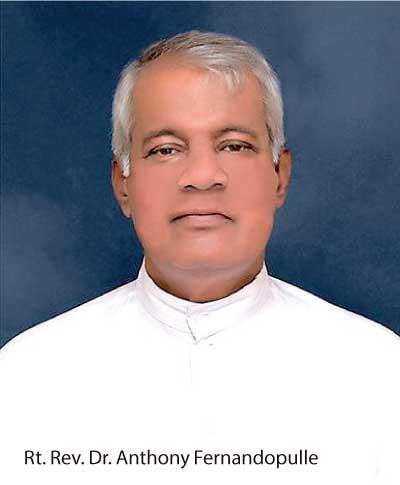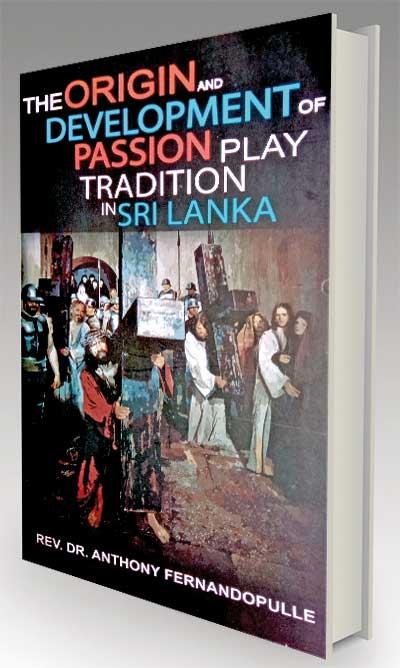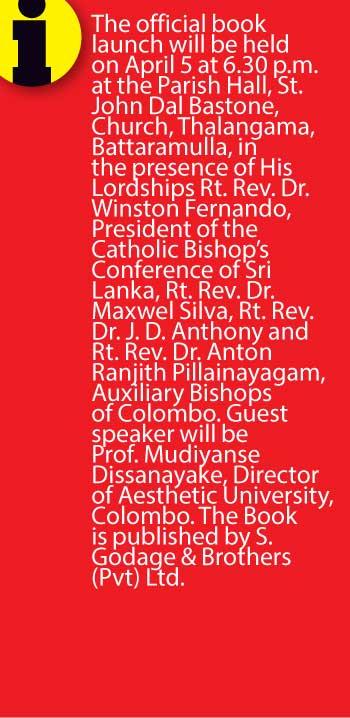General
Origin and Development of Passion Plays in Sri Lanka – by Trevor Ludowyke


- The Pitipana Passion Play, and other similar plays in Maggona, Diyalagoda, Payagala, Kalamulla, Wadduwa, Duwa in Negombo and Moratuwa are among the most famous in Sri Lanka
- Overall, the book is very interesting and keeps one wondering how much our missionaries have toiled over centuries to preserve the Christian faith in Sri Lanka
- The official book launch will be held on April 5 at 6.30 p.m. at the Parish Hall, St. John Dal Bastone, Church, Thalangama, Battaramulla
The season Lent has dawned upon us once again and for most Catholics it’s the liturgical season they cherish

The Passion of our Lord takes centre stage throughout the season of Lent and meditations on the Stations of the Cross aka Way of the Cross are conducted in every parish as a para-liturgical service or as an individual pious exercise, with pilgrims flocking to Calvary sites in large groups to engage in such religious exercises. While elaborate passion plays depicting the condemnation, trial, suffering and the ultimate crucifixion and death of Jesus Christ have been popular in many European countries, one such play stands out as being one where most have left profoundly moved by the experience. Yes, I am referring to the world’s most famous Oberammergau Passion Play, which goes on stage every 10 years with a massive cast of over 2000 villagers of Oberammergau in Germany.
In Sri Lanka, too the passion play tradition has had a chequered history. The Pitipana Passion Play, and other similar plays in Maggona, Diyalagoda, Payagala, Kalamulla, Wadduwa, Duwa in Negombo and Moratuwa are among the most famous in Sri Lanka. We are also familiar with some of the films like the Passion of Christ by Mel Gibson and Jesus of Nazareth by Franco Zeffirelli, where the passion of Christ is depicted by professional actors playing the many roles in the scenes connected to the event. Where did all this originate? What were the origins of the passion play tradition worldwide and how did it evolve over the centuries in Sri Lanka? Were these plays performed by live actors, statues or puppet like images? Why was it that live actors were not allowed to play these roles until recent times?


Evidently, extensive research including visits to Oberammergau in Germany and scrutiny of relevant manuscripts, personal interviews have gone into this study by Rt. Rev. Dr. Fr. Anthony Fernandopulle, who is no stranger to the history and literature readership in Sri Lanka. Fr. Fernandopulle’s first celebrated doctoral thesis is “A Critical Study of the Works of Fr. Jacome Gonsalves (1676 – 1742)” at the University of London, which won the State Literary Award 2018. Fr. Fernandopulle is currently the Rector of St. Nicholas’ International College, Colombo, Parish Priest of St. John Dal Bastone, Church, Thalangama, Battaramulla, Secretary of St. Joseph Vaz National Secretariat and a member of the Board of National Encyclopaedia in Sri Lanka. The writer recalls with much nostalgia the pioneering effort by Dr.Fernandopulle, in staging a passion play similar to the Oberammergau passion play named “Alokayano” supported by a cast of over 200 parishioners of Kotte, on the sprawling playground of St. Thomas’ College, behind the parish church, during his tenure as Parish Priest in 2015. The writer himself was fortunate to have played the role of Peter the Apostle, besides award winning actress Veena Jayakody as Mary Magdalene and popular actor Jihan Srikanth Appuhamy as Jesus Christ.
As Executive Producer of Alokayano, Fr. Fernandopulle’s own research study would have undoubtedly contributed significantly to its overwhelming success.
In the first chapter of this book, Fr. Fernandopulle sets the stage for the discourse by exploring the evolution of the Sinhala dramatic traditions and the Christian contribution to Sinhala drama including the Catholic influence upon them in its earliest formats. These include nativity plays depicting the birth of Jesus Christ and Passion plays depicting the suffering, death and resurrection of Jesus.
The second chapter deals with the various traditions of passion plays in Sri Lanka and traces their roots to

The contributions of St. Joseph Vaz and Fr. Jacome Gonsalves, both missionaries from Goa; their brief life stories and their influences upon the traditions of Passion Plays and Pasan chants are also highlighted in this chapter. Chapter three, deals with some of the general structure and content of the earliest passion plays, which were staged particularly during Holy Week and Good Fridays.
The chapter provides a brief explanation of final events that led to Christ’s crucifixion starting from his triumphant entry into Jerusalem commemorated on Palm Sunday until his body is laid in the tomb on Holy Saturday. Through these events, the study explores some of the salient factors that were incorporated into passion plays such as the power struggle and conflict, extravagant love and exemplary service, and finally, the endurance of the cross.
Chapter four is a comparative study between the Oberammergau Passion Play and the Boralessa Passion Play of K. Lawrence Perera. A brief story of the miracle of Oberammergau after the Black Death pandemic and the vow made by the villagers is also inspiring. The staging of the passion play every ten years is the fulfillment of their vow in gratitude to God for delivering them from the Black Death Pandemic.
The chapter ends with briefs on some of the popular Passion Plays in Sri Lanka. Overall the book is very interesting and keeps one wondering how much our missionaries have toiled over centuries to preserve the Christian faith in Sri Lanka braving all odds and how much we owe to these traditions of Passion plays that kept the flame of faith burning in our hearts even to this day.










